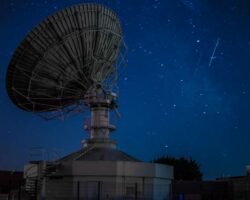NASA-ESA Satellites Find Tonga’s Volcanic Eruption which Surprisingly Changed Earth’s Atmosphere

NASA and ESA satellites’ joint observation revealed that the effects reached the edge of Earth’s atmosphere just a few hours after the eruption
The Hunga Tonga-Hunga Ha‘apai volcano, which made global headlines after its massive eruption on January 15 this year, saw its effects reach outer space, NASA discovered. The American space agency says that its Ionospheric Connection Explorer (ICON) mission and the European Space Agency’s (ESA) Swarm satellites found that the effects reached the edge of Earth’s atmosphere just a few hours after the underwater eruption. These effects became evident when the two missions found hurricane-speed winds and unusual electric currents formed in the ionosphere- Earth’s electrified upper atmospheric layer. Tap here to read more about Tonga’s eruption.
The atmosphere changing effects were caught by NASA’s ICON, which was launched in 2019 to identify how Earth’s weather interacts with weather from space. Brian Harding, from the University of California and the lead author of the observational study said in a statement that the Tonga Volcano in the South Pacific created one of the largest disturbances in space seen in the modern era. “It is allowing us to test the poorly understood connection between the lower atmosphere and space”, he added
Moreover, Jim Spann, space weather lead for NASA’s Heliophysics Division, said that the findings show how events on Earth can affect weather in space adding that a holistic understanding of space weather “will ultimately help us mitigate its effects on society”.


